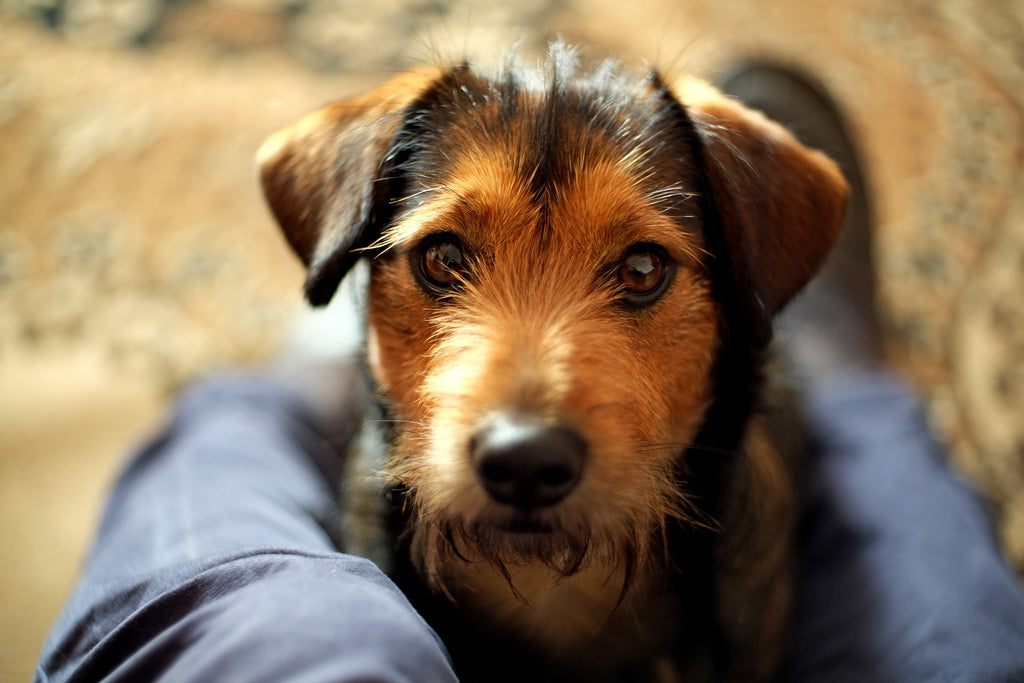Hi Dog Lovers, we would like to start this week's blog post with ASK A DOG TRAINER section. Last week we had a question and our professional Dog Trainer Ted Carlson was here to the rescue.
QUESTION:
My German Shepherd lives in to house holds mine and my fathers. When I am at work. We live next door to one another. She has the structure at my house and a lot of freedom at my dad's. She tries vary hard to please. She just turnd a year old and now she is getting testier with other people that come over and people around the cars. Any advice would help.
ANSWER:
How To Deal With The Nuisance Of A Hot Spot On Your Dog?
A Hot Spot On A Dog
As we all know, springtime is right around the corner where things like insects, fleas, and allergic reactions become more frequent. We tend to think the arrival of spring as being a good thing for our furry friends, however, with them being more exposed to the outdoors their more susceptible to hot spots.
What’s a Hot Spot?
A hot spot’s a red, moist, hot lesion usually located on a dog’s hip, head or chest. They can form in just a few hours and cause considerable discomfort for your dog. Aside from discomfort, a hot spot can affect your dog in a number of different ways:
• Very itchy and painful
• Unusually aggressive due to the pain
• Possible depression due to the pain
• Matted Fur
• Hair loss
• Smelly odor from the lesion
Many dog owners assume a hot spot just affects the dog’s skin, but, as mentioned above, the pain brought on by the hot spot can really affect your dog’s personality. And that’s why it’s important for dog owners to know how to effectively deal with a hot spot. After all, we all just want our dogs to be happy.
What Causes Hot Spots on Dogs?
A hot spot on a dog can be caused by a number of things, basically, anything that irritates your dog’s skin enough for them to start excessively scratching or biting. Some of the most common triggers for hot spots on dogs are:
• Allergic reactions
• Insect bites
• Fleas
• Poor grooming
• Ear and Skin infections
• Boredom or Stress
Of course, most dog owners know about the dangers of an insect bite or fleabite. However, just leaving a dog alone for an extended period of time can lead them to bite themselves into a hot spot. From either stress or boredom, dogs can bite themselves right into a painful experience.
In many cases, a hot spot is related to fleas or boredom/stress; however, the location of the hot spot can point to another underlying cause. For example, a hot spot located under the ear could point to an ear infection; if the hot spot’s located near the hip, it could point to an anal gland infection. In either case, you must contact your vet immediately, in order, for both to be treated simultaneously.
If a hot spot does appear on your dog and you can’t get to vet right away, they’re ways to treat them from inside your home beforehand.

Dog Hot Spot Treatment
Optimally, if a hot spot does appear on your dog, you should bring them to vet. After all, you don’t know if the hot spot is a symptom of something else. But, these steps will help you treat your dog, in the meantime, before you consult with your vet.
1) First, trim around the hot spot using animal clippers. If the area is too big for clippers, shave it. This will allow the area to air out and speed-up the healing process for your dog.
2) Second, apply Neosporin or some other antibiotic cream to the infected area to prevent further infection.
3) Now, here comes the hard part, you have to prevent your dog from further biting or scratching the hot spot. You can accomplish this by putting a plastic cone around your dog’s neck; it will limit their ability to bit themselves. Of course, you’ll need to watch them attentively because a hot spot’s very irritating to a dog and they will do anything to itch or bite that spot. You can also clip their nails or put booties on your dog’s feet to discourage further scratching.
4) Finally, watch the area to make sure it’s healing and doesn’t get worse or spread. If it does get worse, contact your vet immediately to make sure your pup is okay.
Now, if you want to avoid this nightmare altogether, they’re certain precautions you can take to fight against hot spots.
How to Prevent a Hot Spot?
Hot spots on dogs can be prevented through a variety of ways. A simple one is providing more exercise for your pup. Hopefully, more exercise will stop your dog from biting themselves out of boredom and creating a hot spot. In terms of reliving your dog’s stress, invest in a dog sitter or walker; it will keep them distracted from the fact you’re gone.
Sadly, some dogs are more prone to hot spots than others such as longhaired or thick-coated breeds: Golden Retrievers, German Shepherds, Chihuahuas, Rottweilers, etc. If your dog is prone to hot spots, regular grooming can help prevent hot spots from reappearing on your dog. In addition, it’s a good idea to keep hot spot prone dogs away from the water; it will just heighten the likelihood of a hot spot popping back up. Also, you can clip their fur in the warmer months to make a hot spot reemergence less likely.
Now, about the pesky little bugs, you can talk to the vet about a flea control program to limit the chances a flea will cause a hot spot on your dog. You can give them regularly medicated baths to fight against the annoying little fleas. Unfortunately, there’s not much you can do to prevent an insect from biting your dog, that’s just a part of nature. In that case, follow the steps laid out in the hot spot treatment section and contact your vet.
If the hot spot is food related, you should switch to a hypoallergenic diet to reduce the chance your dog comes in contact with the ingredient causing the biting and scratching. If it’s a food allergy, your dog will most likely have other symptoms such as vomiting or diarrhea.
Importance of Hot Spot Awareness
Overall, hot spots on dogs might not be a life-threatening situation, however, they're very disruptive to your dog’s happiness. And that’s all we want for our furry friends, a life full of happiness and joy. So, please don’t underestimate the nuisance that a hot spot can be for your dog. Take preventive measures and save your dog from the pain and discomfort of a hot spot. Honestly, taking these preventive measures just gives you another excuse to spend more time with your dog!
Thanks a lot for reading this blog post. If you like it and find it useful pls leave a comment.
Have a good day! Just one last thing, if you want to learn more about Dog Caring, click the link and download a FREE EBOOK













